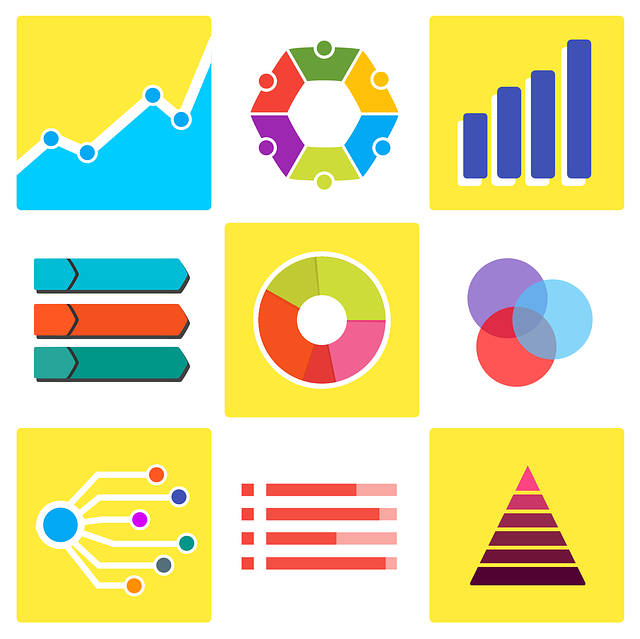Branding Challenge Day 20 Using Infographics to Brand Your Business
Almost every day I see an infographic on Facebook, Pinterest, or other social media. They’re really not anything new, but they might seem new because they pop up so much these days.Using Infographics to Brand Your Business is a smart move.
Think about what you see as you scroll through your newsfeed. You might see a diagram that shows you what the day’s weather is going to look like. You might see a chart that shows how to follow a new fitness craze.
It’s not uncommon to find a visual representation of how to cook a specific recipe. Or maybe all the ways you can use herbs to get healthy. The term “Infographic” encompasses all of these concepts and is a great way to brand your very own business.
What Is an Infographic?
Infographics are visual representations used to share information. They do this in a way that’s easy to read and understand. One of the earliest and most common uses of infographics is in your local weather forecast.
By simply scanning the small picture you can see if it’s going to be sunny or rainy. What the temperature is, and any weather trends for the week. It’s simply a quick and easy way to get the data you need.
And if you notice, it usually includes the television station’s logo on it, too. Look in the lower right corner of this one, and you’ll see the channel number and NBC logo for branding. The completed infographic is then very shareable from their social media sites.
Infographics can be very simple, or they can share more complex ideas. But the beauty of this type of visual image is that even a complicated idea can seem simple to the average consumer when represented this way.
You can use an infographic to tell the story of your business, share a tool that your customers can use, help people understand a process, promote your brand and encourage people to come to your site.
An infographic can really be used to express any kind of information that you want to share with your audience. It can have pictures, a flow chart, numbers, and words artistically arranged in a simple way to catche the eye.
Some of the best topics to use for infographics include:
* Facts that might surprise your audience
* Instructions for your customers (for example how to join a contest or use your product)
* The success rate of your product
* Taking something really complicated and making it easy to understand
* Making comparisons
* Illustrating trends
* Showing a timeline
And these are just a few examples. There are endless ways that you can apply infographics to your business. Once you start to use them, you’ll find more and more ways to do it.
Why Use Infographics?
Infographics are powerful branding tools and you should look for ways to incorporate them into your own branding plan. There are many reasons why these simple visuals make a big impact.
They’re eye catching. Statistically speaking, visual posts on social media sites get much more interaction than those that only use words. When you’re scanning your Facebook newsfeed, you’re much more likely to stop and look at an infographic than a text-only status update.
They’re easy to embed. You can add infographics to all kinds of platforms including a WordPress blog, Facebook, Pinterest, Twitter and more. It just takes a single click to add an infographic to your blog post, status update, or Twitter feed.
They’re shareable. Once you’ve uploaded an infographic, it’s easy for others to share it by pinning it, sharing it in their Facebook newsfeed, or retweeting it. That means your post is more likely to go viral.
It gives you a spike in traffic. When you have an infographic, you encourage people to click and share, which increases the traffic to your blog or other websites.
You’ll naturally encourage others to link to your site, which will also improve your search engine optimization. We all know that Google appears to be looking at the social gravity a site has – the organic following it commands online.
It creates authority. By sharing information through an infographic, you represent yourself as an expert authority on a particular subject. People will begin looking to you for advice or to ask questions.
They give you branding power. Infographics can easily be used for branding when you add your logo and URL. Every time your infographic is shared, more and more people will learn about you and where they can go to learn further details or purchase a solution.
They’re fun and engaging. Infographics are a fun way to share information and they will help you develop a greater connection with your audience and potential clients.
Ideally, you want to develop relationships with your customers and infographics are a great tool to help you do that. They’re a way for you to speak to your audience through their senses.
DIY Infographic
If you’re a little nervous about making graphics, there are some great tools to help you make them with ease. Piktochart, for example, is a great site that offers free tools for making infographics.
You can also upgrade to a pro membership with a monthly or yearly fee to get access to even more templates. First, you’ll need to go to piktochart.com and set up an account so that you can begin.
 Once you have an account, it’s easy to create your own infographics in minutes. You’ll first select the infographic format that you want to use and then scroll down to see all of the templates you can use.
Once you have an account, it’s easy to create your own infographics in minutes. You’ll first select the infographic format that you want to use and then scroll down to see all of the templates you can use.
Although many of them are free, there is a greater choice for premium mebers. You can also create one from scratch. Once you choose a template, you’ll be prompted to name your piktochart.
Once you do that, the next step is an editor screen where you can change the text, add images, and make changes to the colors and background. It’s a very user-friendly interface that makes it easy to get just the right infographic for your business.
Don’t forget always to add your logo and URL so that as you share your infographic, you’re also sharing your brand to a wide audience. From piktochart, your website will be hyperlinked so that people can easily click on it and go right to you.
Once you have your infographic just the way you want it, you can save it, download it, or share it on social media right from the editor screen. It’s really easy – even for someone who doesn’t love dealing with graphics.
There may be other tools on the market, but this is the one that I use for creating eye-catching infographics of my own if I’m not outsourcing, which is my preferable method.
Outsourcing an Infographic
If you really just don’t want to deal with your own graphics, you can also hire someone else to do it. Fiverr is a great resource for inexpensive infographics – you just give the information and someone else will do the graphics work.
But don’t expect a good one to really cost $5. A decent infographic will have add on expenses. Sometimes, you can find a good Fiverr gig where you choose a template or just tell the graphic designer what you want and you provide the wording for them to fill into the picture.
When you only need an occasional graphic, outsourcing might make sense. But if you’re going to make a lot of them, it might make more sense to learn how to do it yourself and use a tool like Piktochart.
Using Infographics to Brand Your Business Part 2 will be published tomorrow.

I didn’t realize that you could make your own infographics thanks for this.
An infographic how to join a contest is terrific